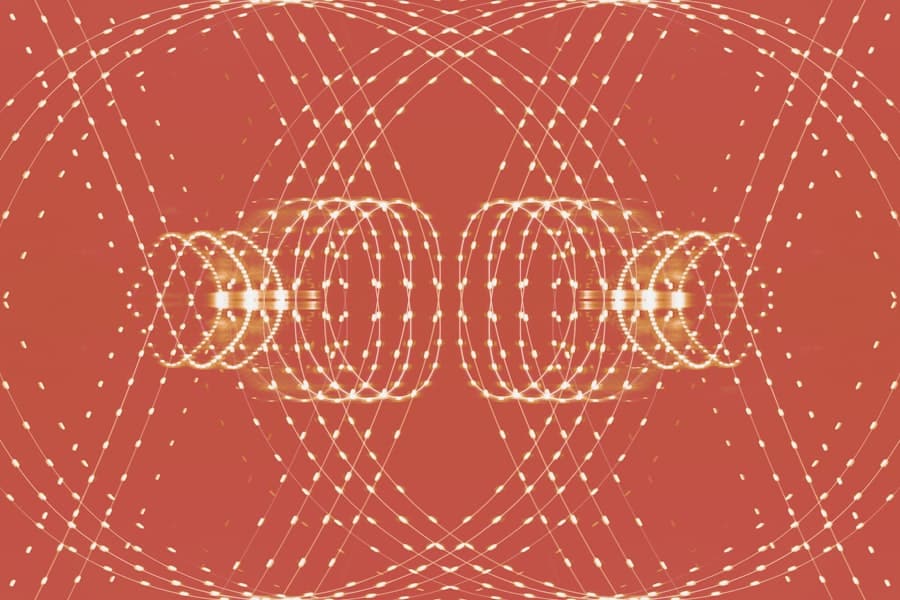Quantum Key Distribution (QKD) represents a groundbreaking advancement in the field of secure communication, leveraging the principles of quantum mechanics to create cryptographic keys that are theoretically invulnerable to eavesdropping. As the digital landscape evolves, the need for robust security measures has become paramount, particularly in an era where cyber threats are increasingly sophisticated. Traditional encryption methods, while effective to a degree, are vulnerable to the capabilities of quantum computers, which could potentially break widely used cryptographic algorithms.
QKD offers a solution by ensuring that any attempt at interception can be detected, thus providing a level of security that classical methods cannot match. The concept of QKD was first introduced in the early 1980s by Charles Bennett and Gilles Brassard, who proposed a protocol known as BB84. This protocol laid the groundwork for subsequent developments in quantum cryptography.
The fundamental principle behind QKD is rooted in the behavior of quantum particles, such as photons, which can exist in multiple states simultaneously. This unique property allows for the creation of secure keys that can be shared between two parties, typically referred to as Alice and Bob, while ensuring that any eavesdropper, known as Eve, cannot gain access to the key without being detected.
Key Takeaways
- Quantum Key Distribution (QKD) uses principles of quantum mechanics to securely share encryption keys.
- QKD relies on quantum properties like superposition and entanglement to detect eavesdropping.
- It offers enhanced security over classical methods by ensuring any interception alters the quantum state.
- Applications include secure communications for government, finance, and critical infrastructure.
- Despite challenges like distance limitations and technical complexity, ongoing research is advancing QKD technology.
The Basics of Quantum Mechanics
To fully grasp the mechanics of Quantum Key Distribution, it is essential to understand some foundational concepts of quantum mechanics. At its core, quantum mechanics describes the behavior of matter and energy at the smallest scales, where classical physics fails to provide accurate predictions. One of the most intriguing aspects of quantum mechanics is the principle of superposition, which allows particles to exist in multiple states at once until they are measured.
This phenomenon is exemplified by Schrödinger’s cat thought experiment, where a cat in a sealed box can be simultaneously alive and dead until observed. Another critical concept is entanglement, a phenomenon where two or more particles become interconnected in such a way that the state of one particle instantaneously influences the state of another, regardless of the distance separating them. This non-local property defies classical intuitions about space and time and is pivotal in QKD.
When entangled particles are used in a cryptographic protocol, any attempt by an eavesdropper to measure one particle will disturb the state of its entangled partner, alerting Alice and Bob to the presence of an intruder.
How Quantum Key Distribution Works

The operation of Quantum Key Distribution typically involves several key steps that ensure secure key generation and distribution. In the BB84 protocol, for instance, Alice sends a series of photons to Bob, encoding each photon in one of four possible states: two polarization states for horizontal and vertical (representing binary 0 and 1) and two diagonal polarization states (also representing binary 0 and 1). Bob randomly chooses a basis to measure each photon he receives, either horizontal/vertical or diagonal.
After the transmission, Alice and Bob publicly share their chosen bases but not the results of their measurements. Once they have compared their bases, they discard any instances where their choices did not match. The remaining measurements form a shared key that can be used for encryption.
The security of this process hinges on the principles of quantum mechanics; if Eve attempts to intercept the photons during transmission, her measurement will disturb their states due to the no-cloning theorem, which states that an unknown quantum state cannot be copied perfectly. This disturbance can be detected through a process called error rate analysis, allowing Alice and Bob to ascertain whether their key has been compromised.
Advantages of Quantum Key Distribution
One of the most significant advantages of Quantum Key Distribution is its inherent security against eavesdropping. Unlike classical cryptographic systems that rely on mathematical complexity for security, QKD’s security is based on the laws of physics. The detection of any interception attempts ensures that Alice and Bob can trust their shared key without relying on assumptions about computational difficulty.
This feature makes QKD particularly appealing for applications requiring high levels of confidentiality, such as governmental communications or financial transactions. Moreover, QKD can be integrated with existing communication infrastructures without requiring a complete overhaul of current systems. Hybrid approaches allow for the combination of classical encryption methods with quantum key distribution to enhance overall security.
For instance, organizations can use QKD to securely exchange keys for symmetric encryption algorithms like AES (Advanced Encryption Standard), thereby benefiting from both quantum security and established encryption techniques. This adaptability makes QKD a practical solution for organizations looking to bolster their cybersecurity measures without significant disruptions.
Potential Applications of Quantum Key Distribution
The potential applications of Quantum Key Distribution span various sectors, reflecting its versatility and robustness in securing sensitive information. In the financial sector, banks and financial institutions can utilize QKD to protect transactions and customer data from cyber threats. As financial systems increasingly rely on digital platforms, ensuring secure communication channels becomes critical in maintaining customer trust and safeguarding assets.
In governmental and military communications, QKD offers an unparalleled level of security necessary for transmitting classified information.
Additionally, healthcare organizations can leverage QKD to secure patient data and comply with regulations such as HIPAA (Health Insurance Portability and Accountability Act), which mandates stringent protections for personal health information.
Challenges and Limitations of Quantum Key Distribution

Despite its promising advantages, Quantum Key Distribution faces several challenges that must be addressed before it can achieve widespread adoption. One significant limitation is the distance over which QKD can operate effectively. Current implementations are often constrained by the loss of photons during transmission through optical fibers or free space.
As distance increases, signal attenuation can lead to higher error rates, making it difficult for Alice and Bob to establish a reliable key. Moreover, the technology required for QKD systems can be expensive and complex to implement. The need for specialized equipment such as single-photon detectors and quantum repeaters adds to the cost and technical challenges associated with deploying QKD solutions.
Additionally, integrating QKD into existing communication networks requires careful planning and coordination with current infrastructure, which may deter organizations from adopting this technology.
Current Developments in Quantum Key Distribution
Recent advancements in Quantum Key Distribution have focused on overcoming some of its inherent limitations while enhancing its practicality for real-world applications. Researchers are actively exploring new protocols that improve efficiency and extend transmission distances. For instance, continuous-variable QKD (CV-QKD) utilizes Gaussian states instead of discrete photon polarization states, allowing for more robust key generation over longer distances.
Furthermore, advancements in quantum repeaters are crucial for extending the range of QKD systems. These devices can amplify quantum signals without measuring them directly, thus preserving their quantum properties while compensating for losses during transmission. The development of satellite-based QKD systems has also gained traction; initiatives like China’s Micius satellite have successfully demonstrated QKD over vast distances by transmitting entangled photons between ground stations.
The Future of Quantum Key Distribution in Securing Communication Systems
Looking ahead, Quantum Key Distribution holds immense potential for revolutionizing secure communication systems across various domains. As quantum technologies continue to mature, we can expect more efficient protocols and improved hardware that will facilitate broader adoption. The integration of QKD with emerging technologies such as blockchain could further enhance security measures by providing tamper-proof records of key exchanges.
Moreover, as quantum computing capabilities advance, the urgency for secure communication solutions will only increase. Organizations will need to adopt proactive measures to safeguard their data against potential threats posed by quantum computers capable of breaking traditional encryption methods. In this context, QKD stands out as a forward-looking solution that not only addresses current security challenges but also prepares organizations for future threats in an increasingly interconnected world.
In conclusion, while challenges remain in terms of implementation and scalability, ongoing research and development efforts are paving the way for Quantum Key Distribution to become a cornerstone of secure communication systems in the years to come. As we navigate an era defined by rapid technological advancements and evolving cyber threats, QKD offers a glimpse into a future where secure communication is not just an aspiration but a reality grounded in the principles of quantum mechanics.
For those interested in exploring how technology can shape our future, a related article on sustainable innovations can be found here: How One Founder Realized the Potential of Sustainable Energy. This article delves into the transformative power of technology, much like QKD, in creating a safer and more sustainable world.
FAQs
What is Quantum Key Distribution (QKD)?
Quantum Key Distribution is a secure communication method that uses the principles of quantum mechanics to generate and share encryption keys between parties, ensuring that any attempt at eavesdropping can be detected.
How does Quantum Key Distribution enhance communication security?
QKD enhances security by leveraging the quantum properties of particles, such as photons, to create encryption keys. Because measuring quantum states disturbs them, any interception attempt alters the key, alerting the communicating parties to potential eavesdropping.
What makes QKD different from traditional encryption methods?
Unlike traditional encryption, which relies on mathematical complexity, QKD’s security is based on the laws of physics. This means it is theoretically immune to computational attacks, including those from future quantum computers.
Can Quantum Key Distribution be used over long distances?
Currently, QKD is effective over limited distances due to photon loss and noise in communication channels. However, advancements like quantum repeaters and satellite-based QKD are being developed to extend its range.
Is Quantum Key Distribution practical for everyday use?
While QKD technology is advancing, it is still primarily used in specialized applications requiring ultra-secure communication. Widespread commercial use is expected as the technology matures and becomes more cost-effective.
What are the main challenges facing Quantum Key Distribution?
Challenges include technical limitations like distance constraints, the need for specialized hardware, integration with existing communication infrastructure, and ensuring robustness against real-world environmental factors.
How does QKD protect against future quantum computer threats?
Quantum computers could potentially break many current encryption algorithms. QKD provides a method of key distribution that remains secure even against quantum computational attacks, safeguarding future communications.
Are there any real-world implementations of Quantum Key Distribution?
Yes, several governments and organizations have implemented QKD systems for secure communication, including satellite-based QKD experiments and fiber-optic network deployments in cities around the world.
Does Quantum Key Distribution guarantee 100% security?
While QKD offers theoretically unbreakable security based on quantum physics, practical implementations must address potential vulnerabilities in hardware and protocols to maintain overall system security.
How does Quantum Key Distribution detect eavesdropping?
QKD detects eavesdropping by monitoring changes in the quantum states of particles used to transmit the key. Any measurement by an eavesdropper disturbs these states, revealing their presence to the legitimate users.

